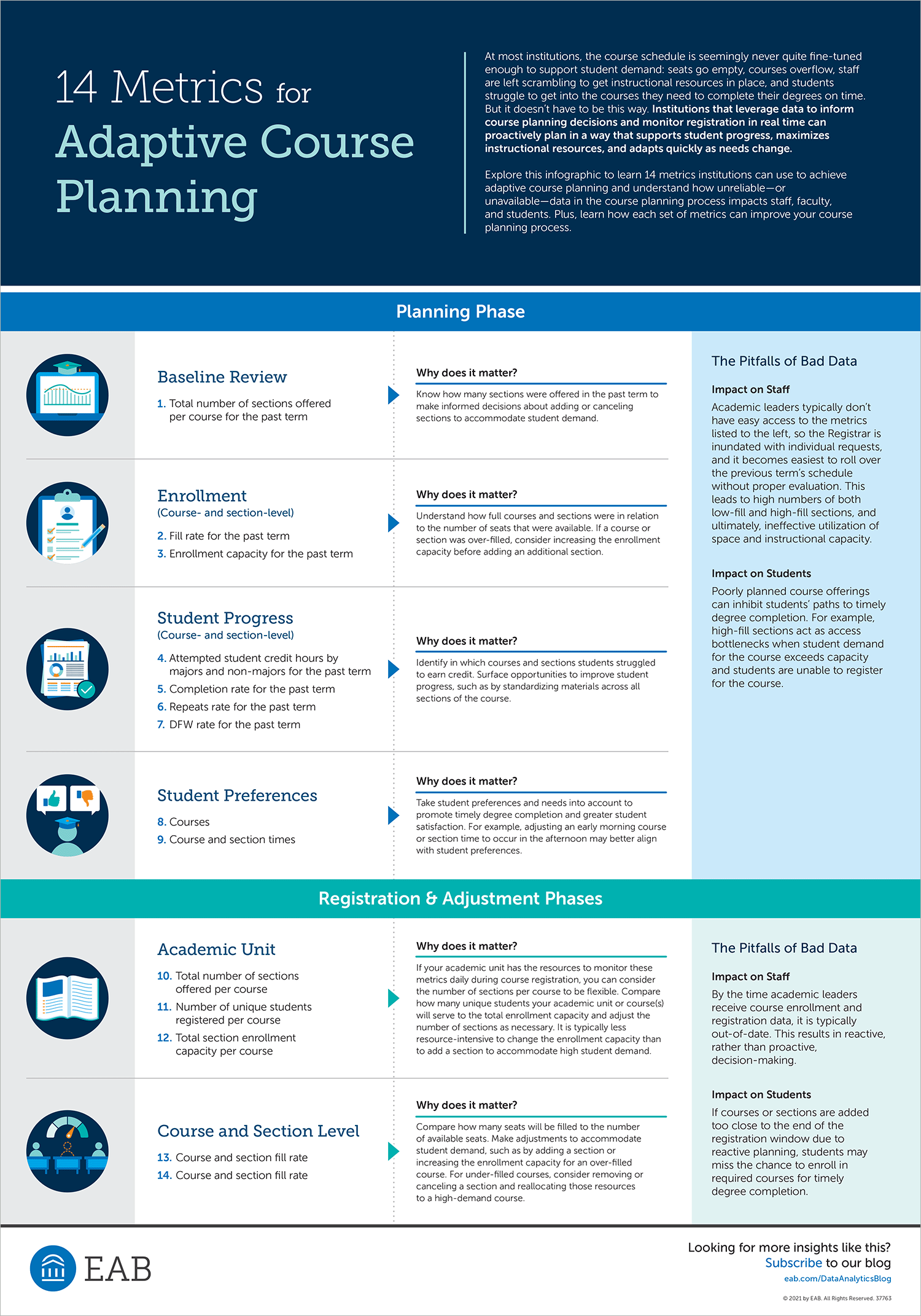Explore this infographic to learn 14 metrics institutions can use to achieve adaptive course planning and understand how unreliable-or unavailable-data in the course planning process impacts staff, faculty, and students.
Additional course planning resources
-
Are your students registering with the help of an academic plan?
Learn how one school saw a 35% increase in preregistration by using EAB's platform for academic plan building, scheduling, and registration.
-
Are students able to quickly build and adjust their academic plans?
Students who make a plan in EAB's academic planning tool attempt an average of 2.68 more credit hours each term than their peers who do not complete a plan.
-
Are your maximum enrollment capacities inconsistent and unreliable?
Improve fill rate accuracy by diagnosing factors contributing to unreliable max caps and building an effective max cap policy.
More Resources

How West Virginia University Transformed Program Review with APS and Edify

Enterprise Data Management Resource Center

